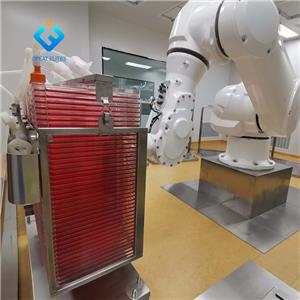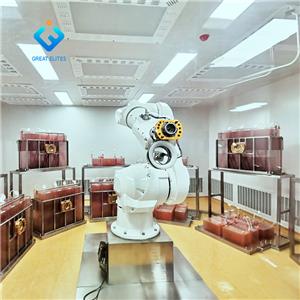The culture medium is classified according to use
According to different uses, the culture medium can be divided into basic culture medium, nutrient culture medium, enrichment culture medium, selective culture medium, identification culture medium, anaerobic culture medium, etc.
1. Basic media is the nutritional basis commonly needed by most microorganisms. If a microorganism has special needs, it can add some ingredients on this basis, such as peptone water, broth culture medium, nutrient agar, etc. 1% peptone water medium is the simplest basic medium. This basic medium can be used for general bacterial enrichment culture and indigo substrate test. If indicators and sugars are added, it will be prepared into sugar fermentation medium for sugar fermentation test and become identification medium; If the dosage of sodium chloride is increased in the 1% peptone water and the pH is raised to about 8.6, it will become alkaline peptone water for the enrichment culture of Vibrio cholerae and become a special enrichment medium.
2. Nutrient media adds some special nutrients, such as glucose, blood, serum, yeast extract, growth factors, etc. to the basic culture medium, so that bacteria with high nutritional requirements can grow in it. Streptococcus pneumoniae, etc. need to grow in a medium containing blood or serum; Eggs, potatoes, glycerin, etc. must be added to the culture medium of Mycobacterium tuberculosis. The most commonly used nutrient medium is blood agar plate.
3. Enrichment media is generally a liquid medium, which is used for the enrichment culture of bacteria. It can be used widely or specially. The special enrichment media often contains special nutrients or growth factors required by the growth of target bacteria.
4. Selective media: the selective media contains nutrients (bactericides) and bacteriostatic agents (selectors). After the specimen is inoculated in such media, non target bacteria are inhibited to varying degrees due to the selective inhibition of bacteriostatic agents, which is more conducive to the proliferation or separation of target bacteria. The positive detection rate of the target bacteria can be improved by using the selective medium for a certain period of time and then inoculating it into the selective identification medium. There are many kinds of bacteriostatic agents, such as malachite green, brilliant green, sodium selenite, sodium deoxycholate, bile salt, sodium tetrasulfide sulfonate, and various antibiotics. The addition amount of bacteriostatic agents should be appropriate and accurate. Some are highly toxic and some are not resistant to high fever. Special attention should be paid to the preparation.
5. Differential media is a reaction substrate and indicator added to the culture medium to distinguish the characteristics of certain microorganisms and identify them. It can be divided into general identification medium and selective identification medium. The medium that is only used to distinguish different microbial species is called general identification medium. Generally, this kind of medium does not add bacteriostatic agents but only contains indicators, such as Kirschner's bisaccharide iron medium, which contains glucose and lactose. Phenol red is used as an indicator to observe the color change of the culture substrate and the inclined surface to determine the fermentation ability of bacteria to glucose and lactose. Add ferric ammonium citrate, After cultivation, observe whether there is black deposition to determine whether the bacteria decompose the sulfur-containing amino acids in peptone to produce hydrogen sulfide; Another example is eosin methylene blue agar, which contains lactose (reaction substrate) and eosin methylene blue (indicator) to identify Escherichia coli, intestinal pathogenic bacteria and other miscellaneous bacteria. The general identification medium is characterized by containing indicators in the formula and can be used to distinguish different kinds of microorganisms. Some identification media can also be used as special needs of bacteria to isolate and culture certain bacteria, such as tryptone soybean agar and chocolate colored blood agar.
Some inhibitors and indicators are added to the culture medium to inhibit the growth of some bacteria, promote the propagation of the target bacteria, and make the growing bacterial colonies have certain characteristics to facilitate identification and selection. This kind of culture medium is called selective identification medium. For example, SS Agar contains lactose (reaction substrate), neutral red, ferric ammonium citrate (indicator), brilliant green and bile salt (bacteriostatic agent) in the medium formula. Bacteriostatic agents such as brilliant green and bile salt can inhibit the growth of Gram-positive bacteria and some Escherichia coli, but have no effect on Salmonella and Shigella. Moreover, Escherichia coli can ferment lactose to produce acid, making the colonies red. Salmonella and Shigella do not ferment lactose, and their colonies are colorless. If the bacteria produce hydrogen sulfide, it will react with ferric ammonium citrate to form ferrous sulfide precipitation, and the colony center is black or brown. So as to achieve the purpose of identification.
In recent years, special color developing medium for some bacteria has been developed at home and abroad by using the specific enzymes of some bacteria and selecting the corresponding substrates. It has been used for the isolation and identification of bacteria, and has received good results. This color developing medium is actually also the identification medium. The basic principle is to add the combination of chromogen (or fluorogen) and bacterial action substrate into the culture medium, and when the bacteria contain corresponding enzymes, the combination will be decomposed to develop color (or display fluorescence). For example, the chromogen glycoside conjugate is decomposed under the action of glycosidase to separate the glycoside from the chromogen and display the color; Fluorescent amino acid conjugates (no fluorescence) display fluorescence by separating amino acids from fluorescent substances under the action of aminopeptidase. Common chromogens for color development are: α- Naphthol β- Naphthol, o-nitrophenol, p-nitrophenol, p-nitroaniline, phenolphthalein, 2-amino, 4-nitrobenzene, etc; Commonly used fluorophores include 4-methylumbelliferone (also known as 7-hydroxy-4-methylcoumarin) and so on. At present, the color development medium has been used for the isolation, identification and culture of a variety of bacteria or fungi, such as Salmonella, Escherichia coli, Listeria, Bifidobacterium, Lactobacillus, Candida albicans and other color development media.
There are also some identification media that use various enzyme systems unique to bacteria to decompose and utilize various specific sugars, alcohols, amino acids or other substrates to produce acids, gases, alkalis or other visible substances, so as to identify bacteria, such as commonly used biochemical media.
The culture medium used for the biochemical characteristic test of bacteria is characterized by adding a specific substrate to the sugar free basic culture medium and adding an indicator. A series of biochemical reaction results of bacteria in such culture medium are finally displayed through the indicator. This kind of medium is biochemical reaction identification medium. According to the dosage, it can be divided into major biochemical medium and minor biochemical medium. It is worth noting that some components of biochemical test medium are affected by many factors, such as high temperature and pH. when preparing and using, it should be strictly controlled according to the actual situation to prevent the effective components from being damaged, so as to ensure its use effect.
6. Anaerobic media is a medium for the isolation, culture and identification of anaerobic bacteria, which is called anaerobic media. Due to the lack of various enzymes necessary for aerobic metabolism, such as cytochrome and cytochrome oxidase, catalase and peroxidase, and superoxide dismutase, anaerobes are unable to carry out aerobic metabolism due to their own metabolic defects, and the energy generated by anaerobic fermentation is insufficient. Therefore, anaerobes cannot grow and survive in normal atmospheric environment. In order to enable anaerobic bacteria to grow normally, it is necessary to prepare a special medium with rich nutrients, low redox potential and special growth factors.
Anaerobic culture medium is usually prepared from heart, brain or other organ extracts, and it is often necessary to add sodium thioglycolate, cysteine, meat residue, reduced iron, activated carbon and other reducing agents or deoxidizing materials. In order to observe the oxygen content of the culture medium, azurol or methylene blue can also be added to the liquid culture medium as a redox indicator. Heart, brain extract, liver mass and meat residue contain unsaturated fatty acids, which can absorb oxygen in the culture medium. Sodium thioglycolate and cysteine are strong reducing agents, which can consume oxygen dissolved in the culture medium. Dry activated carbon and absorbent cotton can also absorb oxygen in the culture medium. Therefore, the purpose of adding reducing agent and absorbing material to the culture medium is to create an anoxic environment of the culture medium and maintain a low redox potential. In addition, a layer of liquid paraffin can be added on the surface of the culture medium to isolate the contact between the culture medium and the atmosphere.
7. Liquid of culture cell (LCL) refers to the liquid used to culture, preserve and transport living tissues, organs and cells in vitro for various purposes. In essence, it is a nutrient environment artificially simulating the growth in vivo, so that cells can grow and reproduce in this environment. Because the number of its components is clear and it can observe various biological changes of the studied object by regulating a certain component, it is widely used in the research of cell biology. The components of the cell culture solution mainly include water, amino acids, vitamins, carbohydrates, inorganic ions, growth factors, etc. these components must be strictly selected and tested before they can be used. The water used must meet the requirements of grade 2 test water (CB / T 6682-1992). The utensils used must be clean and free of pollution and be subjected to high-pressure sterilization or dry baking to remove heat sources.




